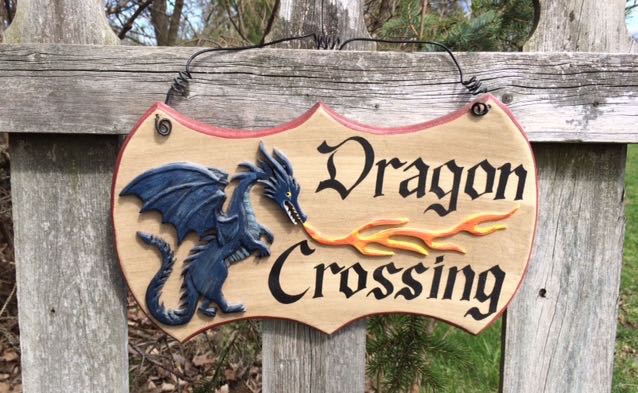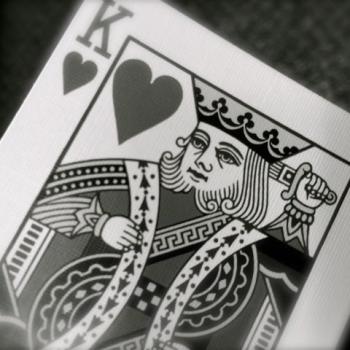
I’ll just say it. I like dragons. Yep, I’m that nerdy guy who’s into the fantasy genre: books, movies, art. If it’s about dragons, I’m into it. Now, if you mention dragons in the Bible, most people will immediately think about the dragon in the book of Revelation. However, what many people don’t know is that dragons are mentioned a lot in the Bible, particularly in the Old Testament. In fact, familiarity with these references to dragons in the OT will actually help the reader understand the dragon in Revelation even better. In the following blog, we are going to examine these OT occurrences. Then we will use them to explain how the dragon in Revelation functions in its literary context.
Your first response to hearing about dragons in the Old Testament is probably, “I don’t remember seeing any dragons.” If you’re reading an English translation, then your memory is correct. In order to catch the dragon references, you have to read the Greek translation of the OT. This version is popularly referred to as the Septuagint or the LXX. This is important because this was the Bible that the early church frequently used. In Greek, dragon is drakōn. In the following, you’ll have to take my word for the fact that this is what you see in the Greek OT (unless, of course, you can read Greek).
In the OT, dragons are often synonymous with serpents. For example, in Exodus 7:8-13, when Moses throws down his staff, in the Greek version it becomes a drakōn. However, a couple of verses later, in 7:15, God references Moses staff that became a serpent (Greek ophis). In Isaiah 27:1 we read, “On that day God will bring the holy and great and might sword on the fleeing dragon serpent [drakōn ophis)], on the coiling dragon serpent [drakōn ophis], and he will kill the dragon [drakōn].” Similarly, we read in Deuteronomy 32:33, “Their wine is the wrath of dragons and the wrath of incurable asps. Other passages are Job 20:16 and the non-canonical Wisdom of Solomon 16:5, 10.
Dragons are routinely associated with water in the Old Testament, especially the sea. This is in keeping with the mythologies of Israel’s neighbors, who also frequently reference dragons. You’ll notice that this usage is particularly popular in poetry. The following are my translations from the Greek.
- Psalm 73:13-14, “You strengthen the sea with your power, you break together the heads of the dragons on the water. You crush together the heads of the dragon, giving it as food to the people of Ethiopia.”
- Psalm 103:25-26, “This great and wide sea, where there are reptiles that cannot be numbered, small creatures and large, where ships travel, this dragon.”
- Psalm 148:7, “Praise the Lord from the earth, dragons and all the abyss.”
- Job 7:12, “Am I the sea or a dragon, which you appoint me to guard?”
- Job 40:25, “Can you lead dragons with a fishhook?”
- Amos 9:3, “If they sink from my eyes into the depths of the sea, there I will command the dragon and it will bite them.”
- Micah 1:8, “There I will make lamentation like dragons and mourn like the daughters of Sirens,” [Here the translation may be appropriating Greek mythology].
- Ezek 32:2, “You consider yourself a lion in the nations, but you are like a dragon in the seas; you burst forth in your rivers, trouble the waters with your feet, and foul their rivers.”
Dragons and water were closely associated in Hebrew thinking.
The third and final way dragons were used in the Old Testament was to symbolize wicked empires. Specifically, they symbolized empires that persecuted Israel. In Jeremiah 50:8 [LXX 27:8] the Babylonian empire is characterized as a dragon. In the next chapter, 51:34 [LXX 28:34], Nebuchadnezzar, king of Babylon is symbolized by a dragon. Similarly, Egypt is characterized as a dragon in Ezekiel 29:3 and 32:2.
Before we talk about the dragon in Revelation, we need to say something about the genre of the book. Scholars classify Revelation as an apocalypse and place it among writings designated apocalyptic literature. The word apocalypse is a transliteration of a Greek word meaning “revelation.” This refers to the act of uncovering or revealing something that, up until that point, had been hidden, unknown. The two most prominent examples of apocalyptic writing in the Bible are Daniel 7-12 and the book of Revelation. Both were written to people who were suffering as a direct result of their refusal to compromise their faithfulness to God. Apocalyptic writings serve to encourage faithfulness during times of suffering by “pulling back the curtain.” By doing so, they allow the audience to see what’s happening behind the scenes. They can see that there is, in fact, a cosmic battle being waged, at the end of which God will be victorious. Those who remain faithful during these times will be vindicated and rewarded by God. Conversely, those who fought against God and persecuted his people will be punished.
So how does this information help us to understand the dragon imagery in Revelation 12-13? We first observe in 12:9 that the dragon is also referred to as “that ancient serpent.” This is consistent with the general pattern of associating dragons with serpents in the Old Testament. Second, in 12:15 when the dragon pursues the woman, we read, “the serpent poured water like a river after the woman, to sweep her away with the flood.” Not only is the dragon again referred to as a serpent, it is also associated with water. In 12:18, the dragon takes its stand on the sand of the seashore, continuing this theme. Third, the dragon is closely associated with the first beast in chapter 13. This beast arises out of the sea (more water connection) and in appearance mirrors the dragon. Worship of the beast is worship of the dragon, from whom the beast derives its power (13:4).
The current scholarly consensus is that the author used the beast to symbolize the Roman Empire. Based on OT usage, we would expect the empire to be symbolized by a dragon, like Babylon and Egypt. However, as an apocalypse, Revelation aids its readers by pulling back the curtain so that they can see what’s happening behind the scenes. Rather than characterize Rome as a dragon, Revelation characterizes Rome as a beast that mirrors the dragon. However, Rome is not the true enemy. Rome is an agent of the true enemy, Satan himself, the power at work behind Rome.
Revelation, like other apocalypses such as Daniel, was written to encourage God’s people to be faithful in the face of suffering that is a direct consequence of their faithfulness. At the time Revelation was written, some Christians were tempted to cooperate with Rome. This would have required them to worship in temples dedicated to Rome as a public demonstration of their loyalty. Failure to do so would bring severe consequences. Revelation warns Christians away from this course of action by pulling back the curtain to reveal exactly who they will be worshipping if they do this.
As we can see, Revelation builds upon the audience’s familiarity with biblical imagery. However, it takes what is known and introduces the unknown by adding a new twist to the traditional imagery. Whereas the OT texts use dragon imagery to characterize wicked empires, Revelation goes one step further and reveals who the true dragon is. It is the power at work behind the latest wicked empire to bring suffering to God’s people.
Over course, as my pal demonstrates, not all dragons are bad.














